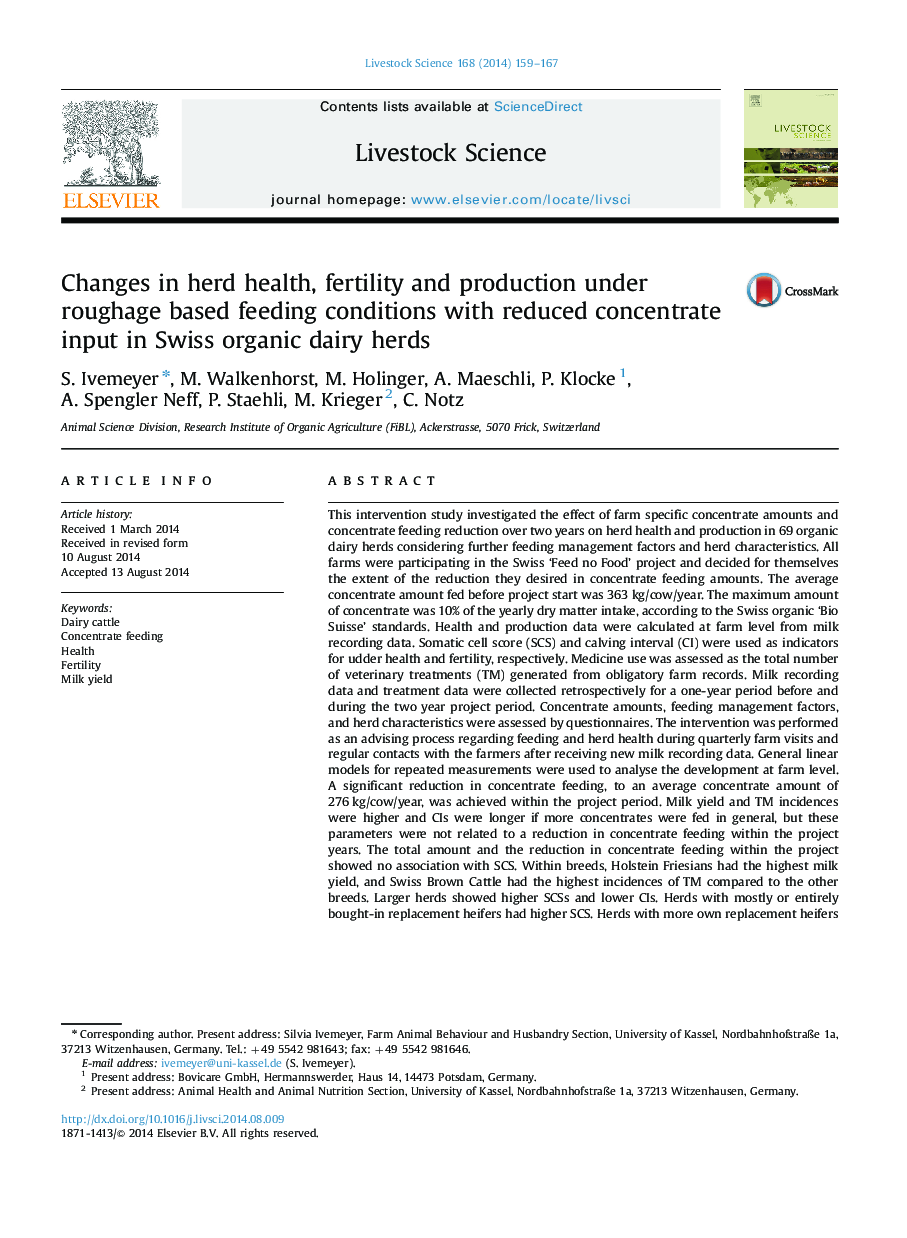| کد مقاله | کد نشریه | سال انتشار | مقاله انگلیسی | نسخه تمام متن |
|---|---|---|---|---|
| 2447277 | 1553964 | 2014 | 9 صفحه PDF | دانلود رایگان |
• We investigated feeding system effect on herd health and production in dairy herds.
• Farms reduced use of concentrates during a two year intervention study.
• Reduction was not combined with impaired milk yield, health and fertility status.
• Advising increased farmers’ awareness to improve roughage quality and management.
This intervention study investigated the effect of farm specific concentrate amounts and concentrate feeding reduction over two years on herd health and production in 69 organic dairy herds considering further feeding management factors and herd characteristics. All farms were participating in the Swiss ‘Feed no Food’ project and decided for themselves the extent of the reduction they desired in concentrate feeding amounts. The average concentrate amount fed before project start was 363 kg/cow/year. The maximum amount of concentrate was 10% of the yearly dry matter intake, according to the Swiss organic ‘Bio Suisse’ standards. Health and production data were calculated at farm level from milk recording data. Somatic cell score (SCS) and calving interval (CI) were used as indicators for udder health and fertility, respectively. Medicine use was assessed as the total number of veterinary treatments (TM) generated from obligatory farm records. Milk recording data and treatment data were collected retrospectively for a one-year period before and during the two year project period. Concentrate amounts, feeding management factors, and herd characteristics were assessed by questionnaires. The intervention was performed as an advising process regarding feeding and herd health during quarterly farm visits and regular contacts with the farmers after receiving new milk recording data. General linear models for repeated measurements were used to analyse the development at farm level. A significant reduction in concentrate feeding, to an average concentrate amount of 276 kg/cow/year, was achieved within the project period. Milk yield and TM incidences were higher and CIs were longer if more concentrates were fed in general, but these parameters were not related to a reduction in concentrate feeding within the project years. The total amount and the reduction in concentrate feeding within the project showed no association with SCS. Within breeds, Holstein Friesians had the highest milk yield, and Swiss Brown Cattle had the highest incidences of TM compared to the other breeds. Larger herds showed higher SCSs and lower CIs. Herds with mostly or entirely bought-in replacement heifers had higher SCS. Herds with more own replacement heifers than bought-in heifers showed lower CIs than herds with entirely own young stock or entirely bought-in replacement heifers. Regarding feeding management, maize as a component of the roughage ration was significantly related to a higher milk yield. In summary, under Swiss roughage based dairy production conditions, a reduction in concentrate use was achieved after a two year intervention study, compared to the year before project start, without significant losses in milk yield, health and fertility status.
Journal: Livestock Science - Volume 168, October 2014, Pages 159–167
